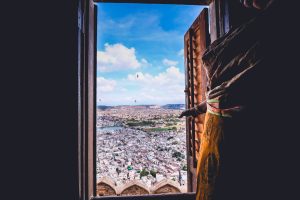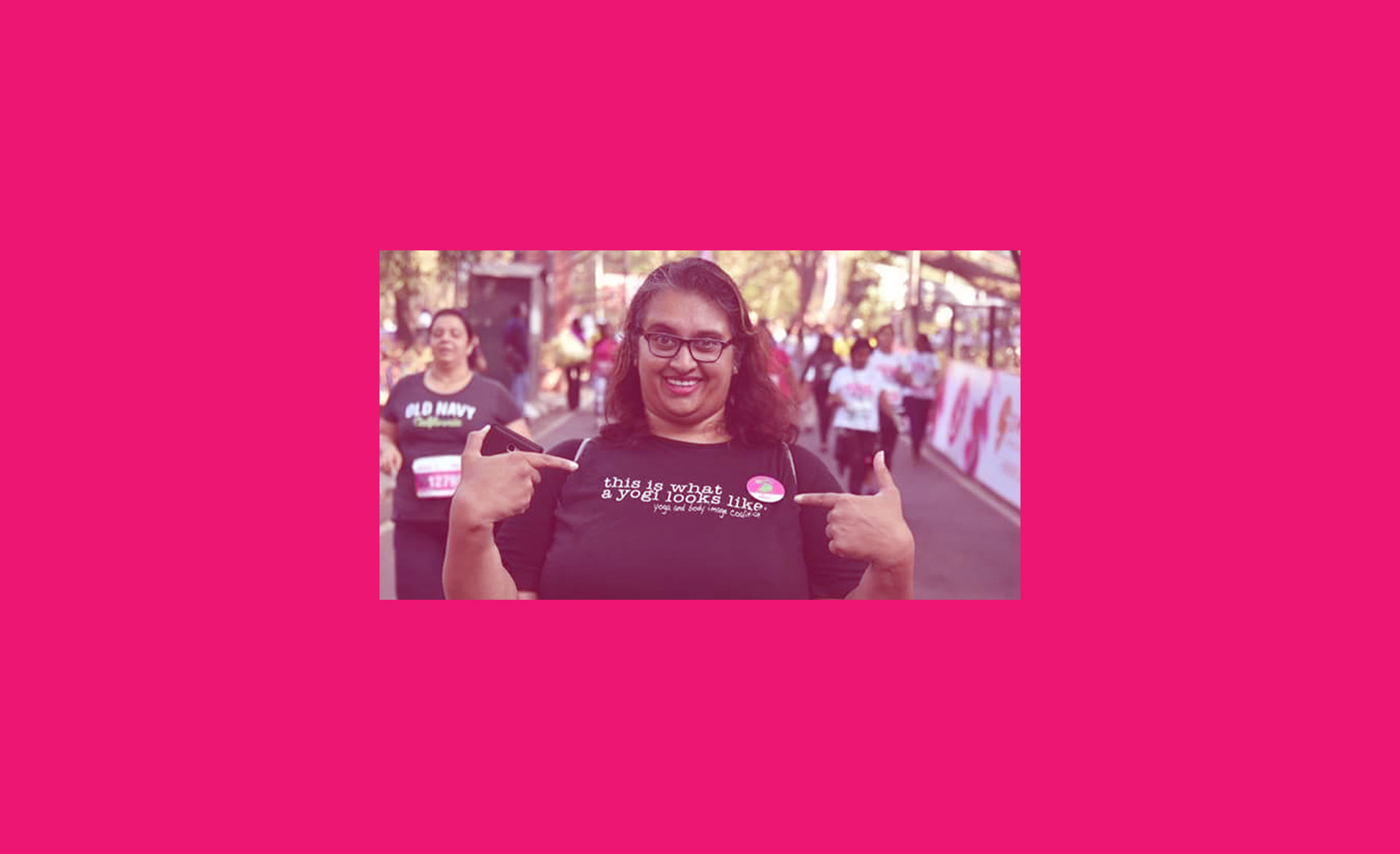Earlier this year, I had the opportunity to be a part of a number of conversations that revolved around the Yoga Industrial Complex, Cultural Appropriation, the need to Honor Yoga, lineage and to essentially be respectful to the indigenous history of the practice. I think it would be honest to say that, in many of these conversations I must have been naive – very naive, actually, to all that was happening. There were times when I even felt reticent in the face of the aggressive debates and controversial arguments. At other times, I just felt emotionally torn that ‘others’ were fighting a seemingly just cause to protect the authenticity of yoga and uplift South Asian teachings, teachers and wisdom – almost as if on my behalf.
For all the unity that yoga is supposed to be, I felt pretty much isolated and as if watching in from the outside of the inside – does that even make sense?
But, as it happens with constructive conversations, including some heated discussions, I started drawing in on the various perspectives of the larger issues as well as smaller ones. Aggressions, transgressions, blatant abuse, appropriation, and microaggressions were some of the issues many conversations revolved around. I started being aware and sensitive, not just to those matters that were obvious, but also those in which I seem to be involved and affected but until then, largely unaware.
Earlier this year, Yoga Journal was in the spotlight for racist and exclusive narratives by issuing split covers for the same issue – sharing the cover between a larger-bodied, person of color and an able-bodied white yoga teacher. This month, they released their Travel & Culture issue with interviews and features of some of my very accomplished desi yoga teacher friends and colleagues – that was a great start.
A little later, Shut Up & Yoga published of 19 yoga teachers to watch for in 2019. It received a bit of heat for showcasing teachers where all but two were white and able-bodied. Needless to say, a big part of the ‘international’ yoga community made themselves heard around these instances and conversations happened; some of these voices were South Asian teachers and persons of color.
In response to that list, two yoga teachers (Sophie Griffiths & Jesal Parikh) proactively took on the effort to collaboratively issue a fabulous list of 19 Women of Color to watch in the Yoga World in 2019.
This list was brilliant… for a lot of the conversations, conversation starters, the multidimensional approach of the practice, AND the narrative. This was important stuff.

Until I noticed that a lot of the narrative was still focused on the western ideal or western narrative of the desi or South Asian yoga teacher. It was a start, and a bloody wonderful start. But in a world where news and culture across countries are so easily accessible, where connections are forged through social media comments that provide opportunities to understand cultures better, the narrative from an Indian yogi, let alone an Indian yoga teacher, was missing. If you’re wondering why this is important, it is because of one simple fact: an Indian, desi, or South Asian yoga teacher in the West is a part of the Western narrative – a part of that ecosystem, with all its issues and drawbacks. They still fit into the parameters of the Yoga Industrial Complex & capitalistic view – even if they don’t necessarily subscribe to it.
An Indian yoga teacher, well, may have many views and experiences that are similar to their desi contemporaries in the West, but also have many other views, experiences, and perspectives that are not being heard. That’s because in the entire collective voice in the West, even in the conversations around bringing the focus back to the indigenous South Asian faculty, the actual platform where these voices can be heard is missing. The work done by many local desis is comparable to their western peers and so is, perhaps, the point of reference – training-wise or even effort-wise. But…. there is still a distance to cover.

I’ll be the first to agree that I have an advantage here by way of exposure and partnerships with teachers in the West, but there’s only so much one can do with prior exposure, industry connections, and friendships. The rest is just as organic as everything else. I mean, how do we go from making online connections to truly getting to know each other, right? The larger game players and narrative shifters are all defining the way from the Western perspective – and those may not necessarily be the ground reality back home.
From the Honor Yoga Collective conversations (a Facebook group to discuss cultural appropriation organized by Susanna Barkataki alongside her summit, “Honor, Don’t Appropriate Yoga”, editor’s note), I realized that there was much to share and learn in terms of cultural exchange, cultural honor, awareness, and sensitivity to appropriation. I also recognized that the onus to teach from my experience was not necessarily on me, as a South Asian. The emotional labour involved in educating around harm can be deeply vulnerable and not always received kindly.
So it got me thinking about the missing link in all of this.
I realized that many NRIs (Indians overseas), Indian-Americans, or citizens of other Western countries (of Indian origin) were already living a life far removed from the daily life and story their resident Indian counterparts experienced. The common ground was a culture where the finer aspects of the practices may or may not be conveyed down generations. But the deeper connection exists, like an undercurrent, in the people of that community despite the generational or residential distance of native, residential Indians or South Asians from the non-residential, expat diaspora.
This cultural distance is even larger between the stereotyped white person/white yogi (or white yoga teacher) and the average Indian yoga teacher. While the Indian/South Asian community may still find common thought and sentiment despite their different places of residence, it is seemingly harder to explain nuance and sentiment to someone from a completely different culture – especially if they come from a dominant white, colonial conditioned perspective.

So what is it like being an Indian Yoga Teacher in India?
• It is hard work & the Western Yoga purview makes it harder.
I refer to the inconsistency in teaching opportunities and the varied schools and systems of teaching and practice even within India. Yoga in India is not a monolithic entity. Neither is Hatha Yoga the only system. Some yoga communities believe that yoga ought to be taught for free. Other schools leave their students with little choice but to compete with their peers to make a living. The yoga industry is suffering from the effects of ‘Colonial Extraction’ – a remnant of India’s colonial past and where the native wealth, wisdom and traditions have been extracted for immediate financial gain by the colonists or colonial government. After the historical culling of many traditional streams of wisdom in Colonial India, not everyone in India is a yoga practitioner. The community really needs to be educated on the value of yoga and answer the ‘why yoga?’ question. But the same starry-eyed community members will happily entertain the glossy repurposed & repackaged yoga that teachers get trained in the West to share in India. So to the yoga teachers in the West who apply the western lens of modernity and rebellion to all things yoga because ‘yoga is for everyone’ and can be approached differently by different people – sorry, but your misinformed practice (or malpractice) is slowly eating into what little remains of the culture it originates from.
• It’s hard to make a living with yoga.
Unless you’re working with an established organization, like a fitness chain, where the philosophy of yoga is not necessarily a priority, or if you work at an ashram or another well-established school where your immediate & personal needs are taken care of, you can forget about making a living from yoga. I speak for the yoga teachers who teach regular yoga asana classes. The few others who super specialize and offer personal classes may probably make a decent income, but if you’re the sole breadwinner and have a family to support, it… is… very… hard.
The average teacher offers a quality asana class in India for about $1-3 per hour (yes, $1 per class!). I honestly feel sick to my gut when I read the average class rates of mediocre and/or highly appropriated classes in the West starting at $30 and upwards. Sometimes fresh graduates of a YTT start at $30 when the draw is a flexible body and an Instagram account fully loaded with highly contorted bodies.

• We’re losing our essence.
With all the Instayoga in da house, it is such a pitiful sight to have so many asana-oriented teachers, especially the new graduates who immediately lock down their Insta profiles and flood their feed and stories with intricately ‘perfected’ asanas. Sadly, even the graduates from ‘good’ schools end up going the asana way and move away from the purpose of the journey. At the same time, some Indian yoga schools are looking to meet the demand of the West. They end up offering watered down ‘yoga courses’ and amping up the yoga tourism business with a flurried rise in yoga certification mills all over the country, especially in the yoga centers of India – Bihar, Rishikesh, Goa, Mysore, Kerala…
• We’re lacking representation.
In the wake of the modern postural yoga identity, a lot of yoga teachers, like I mentioned in the previous point, tend to identify and exemplify yoga to be a postural aspiration and that of the stereotyped, western, able-bodied narrative – the ‘love & light’ narrative, as I usually call it. The integral philosophy of yoga is threatened by the constant application of the able-bodied supremacy. This modern asana-based approach promotes fitness, weight loss, and a drive to be physically and outwardly ‘fit’ even if it means they’re compromising their mental peace and happiness in the process.
In other words, the essential idea of yoga being a practice for spiritual evolution regardless of the physical appearance is slowly being replaced by the western stereotype of flexible, fair-skinned, rubber-band bodies on a mat.
The idea of a larger-bodied yoga teacher, or one with physical limitations or disabilities is an anomaly – it is disruptive to the common place stereotype.
• We don’t really actively work towards social justice.
Believe it or not, this one just came up to me. I really, really had to scratch my head & think if this was a point I wanted to add here and I realised that I did. Why? Because of all the teachers that I know, I’m still not sure how many actively move beyond their on-the-mat practice to off-the-mat advocacy of matters beyond asanas & philosophical debate. To be fair, Indian yoga teachers are largely focused on their practice and their teaching. Not many are abreast of the larger yoga conversations and controversies outside of the country – even if those conversations are actually about them and may affect them.

• We are diverse but lack opportunity to represent.
Most yoga teachers in India are asana teachers. But there are also many teachers devoted to their self-study, svadhyaya, as well as their purpose to teach & learn. We have teachers of the different schools of yoga as well as the different limbs and approaches. It is a pity that while the Indian-American (or South Asian or equivalent BIPOC) teacher is given a platform to engage in diversity in yoga and yogic thought, no one goes back to India to reach out to those voices that have as much to share in terms of content, context, nuance, and experience. They could and would definitely benefit from the exposure too!
When the Western yoga communities engage in projects of social justice, very few of them actually go beyond the shores of their countries and residence and seek to make a difference to the land of the origin of yoga.
• We are contemporary teachers.
Which means that we are very similar to most other teachers around the world with one exception – we are desi. We are practicing an art and a science that comes from a wisdom tradition that is ours and is homegrown. We are global citizens, aware of what is happening around the world. But we are also struggling to come to terms with the generational inadequacy that many of us are not even aware of – a residue of colonization and an inherited trauma scarred in our historical, collective karma. In the process, we often forget that we are the inheritors of this practice, this wisdom – and many times inadvertently are complicit in how yoga is treated and misrepresented in the western world.
• We are undervalued.
And in all this, the average Indian yoga teacher places a nominal value on their service. And the western world knowingly or unknowingly fuels that by continuing to take what this country has to offer by means of yoga – by way of an ‘economical’ transaction. Yoga Teacher Trainings in India come at a fabulous price to western aspirants! We have teachers who are happy to share our culture, norms, thoughts, and learnings – sometimes even for free – because many of us believe that knowledge flows… That freely offered knowledge is later priced and sold onwards with very little or no gratitude or credit to the source, financial or otherwise. In the end, the disparity between the give & take remains.

There is a lot to unpack here – and I still have many thoughts billowing in my head, trying to settle and blow up at the same time. I also have the real uneasiness of witnessing appropriation and misrepresentation of yoga and yogic thought on a daily basis – and the unpleasant taste of defensive fragility, a refusal to acknowledge harm when it is called out.
Yet, I do the one thing I really know to remain true to the practice and values that make me ME. These are values I have received through my practice, from my teachers and from the scriptures. Am I a warrior to stand up for this? Maybe, maybe not… I may not necessarily be a custodian of my culture, but I most certainly can use my space, my personality, and my words to share what I experience.
Again, I’m still unpacking all of this – and know that when asked, I usually have something to add on what it’s like to be an Indian yoga teacher living in India… Because, well, I am one myself after all!
Edited by Ely Bakouche





